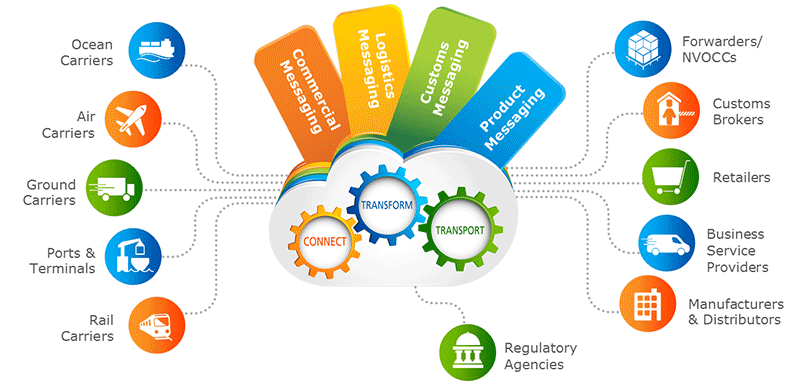摘要
本文深入解析MSDS(材料安全数据表)报告和运输鉴定报告的核心要素及其在危险品运输中的关键作用。文章详细阐述了MSDS报告的16项标准内容及其应用价值,以及运输鉴定报告的测试项目、分类标准和法律效力。通过对比分析两种报告的异同点,并结合实际案例,为企业提供危险品分类、包装、标识和运输全流程的合规指导,帮助企业在国际贸易中规避法律风险,确保运输安全。
关键词 MSDS报告;运输鉴定报告;危险品运输;化学品安全;运输合规
引言
在全球化的商业环境中,化学品和危险品的跨国运输日益频繁,如何确保这些物质的安全运输成为企业面临的重要挑战。MSDS报告和运输鉴定报告作为危险品运输的两大核心文件,在保障运输安全、遵守国际法规方面发挥着不可替代的作用。然而,许多企业对这两种报告的理解仍存在混淆和不足,导致在实际操作中面临合规风险。本文旨在系统解析这两种报告的内容、作用及应用,为企业提供清晰的指导,帮助其建立完善的危险品运输管理体系。
一、MSDS报告的核心内容解析
MSDS报告,全称为材料安全数据表(Material Safety Data Sheet),是一份详细记录化学品物理化学特性、危害性及安全使用指南的综合性文件。根据国际通用的GHS标准,完整的MSDS报告包含16个标准部分,每一部分都承载着特定的信息价值。
报告的第一部分为"化学品及企业标识",明确标注产品名称、供应商信息和紧急联系方式。第二部分"危险性概述"简要说明物质的主要危害和警示词。第三部分"成分/组成信息"详细列出所有组分及其浓度范围,特别是危险成分的CAS号。第四部分"急救措施"针对不同接触途径(吸入、皮肤接触、食入)提供具体的急救指导。
第五部分"消防措施"说明适用的灭火剂及特殊火灾风险。第六部分"泄漏应急处理"指导如何安全控制和处理泄漏。第七部分"操作处置与储存"提供日常操作和长期储存的注意事项。第八部分"接触控制/个人防护"规定职业接触限值和必要的防护装备。
第九部分"理化特性"包含沸点、熔点、闪点、密度等关键物理参数。第十部分"稳定性和反应性"评估物质在不同条件下的化学稳定性。第十一部分"毒理学信息"详细记录急性、慢性毒性数据。第十二部分"生态学信息"评估对环境的潜在影响。
第十三部分"废弃处置"指导符合环保要求的处理方法。第十四部分"运输信息"提供UN编号、运输名称和包装类别等关键运输数据。第十五部分"法规信息"列出适用的国内外法规。最后,第十六部分"其他信息"包含编制日期、修订说明等补充信息。
二、运输鉴定报告的关键要素分析
运输鉴定报告是针对特定物质或物品进行专业检测后出具的运输适宜性评估文件,其核心目的是确认产品是否符合国际运输法规的要求。该报告通常由具有资质的第三方检测机构出具,包含一系列关键测试项目和评估标准。
物理危险性测试是运输鉴定报告的基础内容,包括振动测试、跌落测试、压力测试等,模拟运输过程中可能遇到的各种物理应力。化学性质测试则评估物质的燃烧性、氧化性、腐蚀性等特性,确定其在运输条件下的稳定性。报告还会进行严格的分类评估,根据测试结果将产品归入适当的危险类别,并确定对应的UN编号和包装等级。
运输鉴定报告具有明确的法律效力,是海关、运输监管部门核查的重要文件。在国际运输中,不同国家和地区对报告的有效期有不同规定,通常为1-3年不等。值得注意的是,当产品配方、包装或运输方式发生重大变化时,即使报告仍在有效期内,也可能需要重新进行鉴定。
三、两种报告的对比与应用场景
虽然MSDS报告和运输鉴定报告都涉及危险品的安全信息,但两者在编制目的、内容侧重和应用场景上存在明显差异。MSDS报告更侧重于化学品全生命周期的安全信息,而运输鉴定报告则专门针对运输环节的特殊要求。从法律效力看,运输鉴定报告通常具有更强的强制性和时效性要求。
在实际应用中,两种报告相辅相成。企业应建立报告管理体系,确保MSDS报告及时更新(通常每5年或配方变更时),运输鉴定报告在有效期内。在出口流程中,MSDS报告常用于前期客户沟通和风险评估,而运输鉴定报告则是清关和运输的必备文件。通过整合两种报告的信息,企业可以建立全面的危险品运输合规体系。
四、企业合规运输的实用建议
为确保危险品运输的合规性,企业应建立系统的管理流程。首先,准确识别产品是否属于危险品至关重要,可参考GHS分类标准和运输法规进行初步判断。对于确认的危险品,必须获取最新的MSDS报告和有效的运输鉴定报告。
在包装选择上,应根据运输鉴定报告确定的包装等级和UN规格要求,使用经过认证的包装材料。标记和标签必须清晰、耐久,包含UN编号、正确运输名称等关键信息。运输文件准备方面,除两种报告外,还需随货提供符合国际要求的危险品运输文件,如多式联运危险品表格。
企业应定期培训相关人员,使其熟悉报告解读和运输要求。同时,建立与专业检测机构的长期合作,确保报告的及时更新和合规性。在遇到不确定情况时,及时咨询危险品运输专家,避免因理解偏差导致的合规风险。
五、结论
MSDS报告和运输鉴定报告是危险品运输安全的两大支柱,企业只有深入理解两者的内容和应用,才能有效管理运输风险。随着全球化学品法规的不断更新,报告的编制标准和要求也在持续演变。企业应保持对法规变化的敏感性,及时调整内部管理流程,确保持续合规。通过专业、系统地应用这两种报告,企业不仅能够满足法律要求,更能为员工、客户和环境提供切实的安全保障,在全球化竞争中建立负责任的品牌形象。
参考文献
张明远. 《国际危险货物运输法规实务》. 化学工业出版社, 2020.
李华强. "GHS制度下MSDS编制的关键要点". 《化学品管理》, 2019, 12(3): 45-52.
陈安全, 王合规. "危险品运输鉴定报告的常见问题分析". 《运输安全学报》, 2021, 8(2): 78-85.
International Maritime Organization. IMDG Code (2020 Edition). IMO Publishing, 2020.
United Nations. Globally Harmonized System of Classification and Labelling of Chemicals (GHS). 9th rev. ed. UN, 2021.
Abstract
This article provides an in-depth analysis of the core elements of Material Safety Data Sheet (MSDS) reports and Transport Identification Reports, as well as their critical role in the transportation of hazardous materials. It details the 16 standard sections of an MSDS report and its practical applications, along with the testing requirements, classification criteria, and legal validity of Transport Identification Reports. By comparing the similarities and differences between these two reports and incorporating real-world case studies, the article offers compliance guidance for enterprises in hazard classification, packaging, labeling, and transportation processes. This helps businesses mitigate legal risks in international trade and ensure transportation safety.
Keywords MSDS report, Transport Identification Report, hazardous materials shipping, chemical safety, transport compliance, GHS, UN number, dangerous goods classification, SDS, shipping regulations, hazard communication, chemical transportation, safety data sheet, logistics compliance, environmental safety
Introduction
In today’s globalized business environment, the international transport of chemicals and hazardous materials has become increasingly frequent, posing significant challenges for companies in ensuring safe and compliant shipping. The MSDS report and Transport Identification Report serve as two essential documents for hazardous material transportation, playing an irreplaceable role in ensuring safety and regulatory compliance. However, many companies still struggle with confusion and insufficient understanding of these reports, leading to compliance risks in practical operations. This article systematically analyzes the content, functions, and applications of these reports, providing clear guidance for businesses to establish a robust hazardous materials shipping management system.
1. Core Components of an MSDS Report
The Material Safety Data Sheet (MSDS), also known as Safety Data Sheet (SDS) under the Globally Harmonized System (GHS), is a comprehensive document detailing a chemical’s physicochemical properties, hazards, and safe handling guidelines. According to GHS standards, a complete MSDS report consists of 16 standardized sections, each serving a specific informational purpose.
Identification – Product name, supplier details, and emergency contact information.
Hazard Identification – Summarizes key hazards and warning statements.
Composition/Ingredients – Lists all components, including hazardous substances and their CAS numbers.
First-Aid Measures – Provides emergency response guidelines for inhalation, skin contact, and ingestion.
Fire-Fighting Measures – Recommends suitable extinguishing methods and fire-related risks.
Accidental Release Measures – Guides safe spill containment and cleanup.
Handling and Storage – Outlines operational and long-term storage precautions.
Exposure Controls/Personal Protection – Specifies occupational exposure limits (OELs) and required PPE (Personal Protective Equipment).
Physical and Chemical Properties – Includes boiling point, melting point, flash point, density, and other critical parameters.
Stability and Reactivity – Assesses chemical stability under various conditions.
Toxicological Information – Documents acute and chronic toxicity data.
Ecological Information – Evaluates potential environmental impact.
Disposal Considerations – Provides environmentally compliant waste disposal methods.
Transport Information – Includes UN number, proper shipping name, and packaging group.
Regulatory Information – Lists applicable national and international regulations.
Other Information – Contains revision dates, preparation details, and additional notes.
2. Key Elements of a Transport Identification Report
A Transport Identification Report is a professional assessment document that determines whether a substance or product complies with international shipping regulations. Issued by accredited third-party testing agencies, it includes several critical evaluations:
Physical Hazard Testing – Simulates transport conditions via vibration, drop, and pressure tests.
Chemical Property Testing – Assesses flammability, oxidizability, corrosivity, and other stability factors.
Classification & UN Number Assignment – Determines the hazard class, packing group, and UN number based on test results.
This report holds legal validity and is mandatory for customs and transport regulatory checks. Validity periods vary by region (typically 1–3 years), and a re-evaluation is required if the product’s formula, packaging, or shipping method changes significantly.
3. Comparison and Application Scenarios
While both reports provide hazardous material safety information, they differ in purpose, focus, and usage:
| Aspect | MSDS Report | Transport Identification Report |
|---|
| Primary Purpose | Chemical safety throughout its lifecycle | Compliance with transport regulations |
| Legal Enforcement | Informational (but required for safety) | Mandatory for shipping & customs |
| Update Frequency | Every 5 years or upon formula change | Typically 1–3 years (region-dependent) |
In practice, these reports complement each other:
MSDS is used for risk assessment and workplace safety.
Transport Identification Report is required for logistics, shipping, and customs clearance.
4. Practical Compliance Recommendations for Businesses
To ensure full compliance in hazardous material shipping, companies should:
✔ Accurately classify products using GHS and transport regulations.
✔ Obtain updated MSDS and valid Transport Identification Reports.
✔ Use UN-certified packaging based on the assigned packing group.
✔ Apply proper hazard labels and markings (UN number, shipping name).
✔ Prepare all required shipping documents (e.g., multimodal dangerous goods form).
✔ Conduct regular staff training on report interpretation and regulations.
✔ Work with accredited testing labs to maintain compliance.
5. Conclusion
The MSDS report and Transport Identification Report are fundamental pillars of hazardous material shipping safety. Companies must deeply understand their requirements to manage transport risks effectively. As global chemical regulations evolve, businesses must stay updated and adjust compliance strategies accordingly. By properly utilizing these reports, enterprises can meet legal obligations, enhance workplace safety, and build a responsible brand image in international trade.







